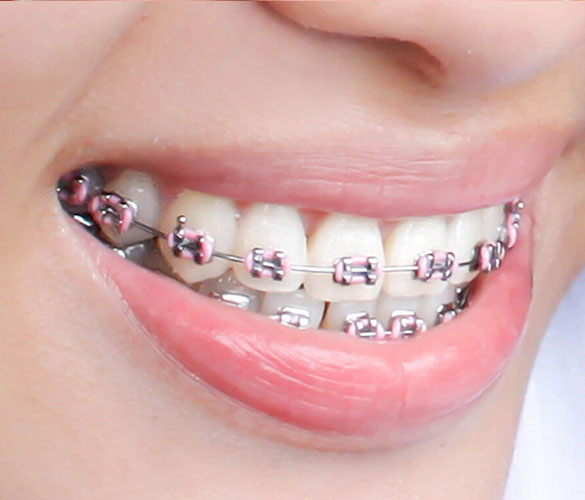Spacing and crowding of the teeth are the main culprits for esthetic and confident smile. Braces / tooth braces are the solutions for straightening/ aligning these teeth in a symmetric position to achieve a confident smile.
Teeth braces price/ braces cost purely depends on type of braces (metal braces, ceramic braces, self ligating braces, clear braces, invisible braces, invisible teeth braces, invisible dental braces & transparent brace) which are used and the course of the treatment along with the orthodontist cost who plans the treatment.
What are Braces?
Braces are dental appliances that aid in the correction of dental issues such as crowding, crooked teeth, or teeth that are out of alignment. It can also be used to improve your smile. Many people get braces in their teens, but adults can get them too. Braces gradually straighten and align your teeth so that you have a normal bite as you wear them.
Your dentist or orthodontist will ask you questions about your health, perform a clinical exam, take a digital scan of your teeth, photograph your face and teeth, order X-rays of your mouth and head, and will then devise a treatment plan for you. Based on the treatment plan you can opt for metal, ceramic or lingual braces.

Types of Dental Braces
1. Traditional BracesTraditional Dental braces are a dental model that uses metal. Everyone is familiar with these types of braces. Traditional Dental braces use metal brackets and wires to gradually realign teeth over a long period of time.
PROS:- They are an effective treatment for tough cases.
- They are affordable and durable.
- Traditional braces have long been regarded as the quickest way to straighten teeth.
- Decalcification can occur in your teeth if you do not floss or brush properly while wearing metal braces.
- Traditional braces are unsightly when smiling and might make some people feel insecure.
- Some patients say wearing traditional braces causes them discomfort.
- A patient has to avoid foods that are easily tucked into the brackets.
Like traditional braces, they rest on the front of the teeth, but because they are constructed of tooth-colored ceramic material, they blend in a little better. They function just as quickly and effectively as metal braces.
PROS:- Braces made of ceramic are far less obvious than metal ones.
- Rapid treatment of any misalignment issues is possible with ceramic braces.
- Ceramic braces are susceptible to staining if they are not properly maintained.
- Patients who wear ceramic braces may complain of discomfort.
Lingual braces are attached to the back of the teeth rather than the front. Since the tongue regularly comes into touch with them, they are more uncomfortable than conventional braces while being nearly undetectable.
If you're considering having lingual braces, you should first discuss your specific situation with your orthodontist to determine whether they would be appropriate.
PROS:- Lingual braces are virtually undetectable when smiling.
- Speed: Lingual braces can be quick if they're the correct choice for your situation.
- Lingual braces are more costly than ceramic and conventional braces.
- Due to the positioning of lingual braces, some patients claim to experience discomfort.
Procedure for Braces
Preparation
- The orthodontist installs rubber bands or spacers between teeth that are too closely spaced apart for a week before braces are applied.
- This will make room for the bands to fit comfortably around the rear teeth.
Putting the brackets in place
- Tiny metal or ceramic components are called brackets to keep the wires in place on the teeth.
- The centre of each tooth is covered in glue or bonding cement to affix the bracket.
Placement of bands
Metal bands are placed on the rear molars to secure the brackets in place.
Addition of Arch Wire
- The orthodontist attaches the archwire to the brackets once the brackets and bands are in place.
- To do this, a little rubber band is wrapped around each bracket to secure the wire in place.
Post-Treatment Care for Dental Braces:
- Follow the prescription given by your dentist.
- There will be some oral discomfort from the entire procedure.
- The portions of the braces causing pain can be covered with wax given by your dentist.
- Additionally, you have the option of rinsing your mouth with salt water or putting a topical anesthetic on the troublesome areas.
- You can only eat soft meals for the first few days.
Dental Care Following Dental Braces:
- Additional dental care is required when wearing Dental Braces. Your orthodontist will show you a new technique for brushing and flossing that will help you prevent tooth decay and stains
- Swish water in your mouth after consuming anything sweet to get rid of any leftover particles. An interproximal brush or a water flosser can clean the teeth underneath the archwire.



